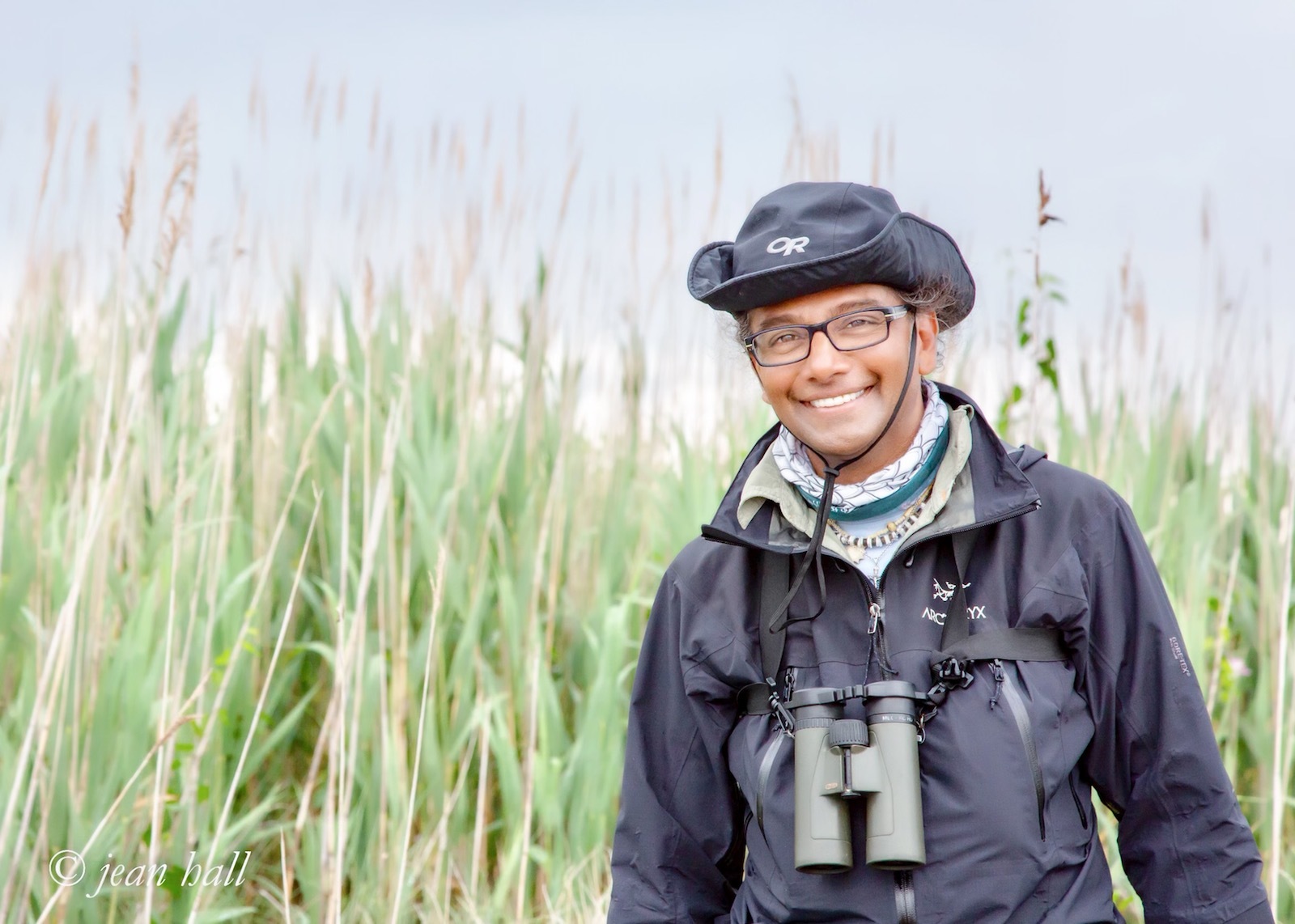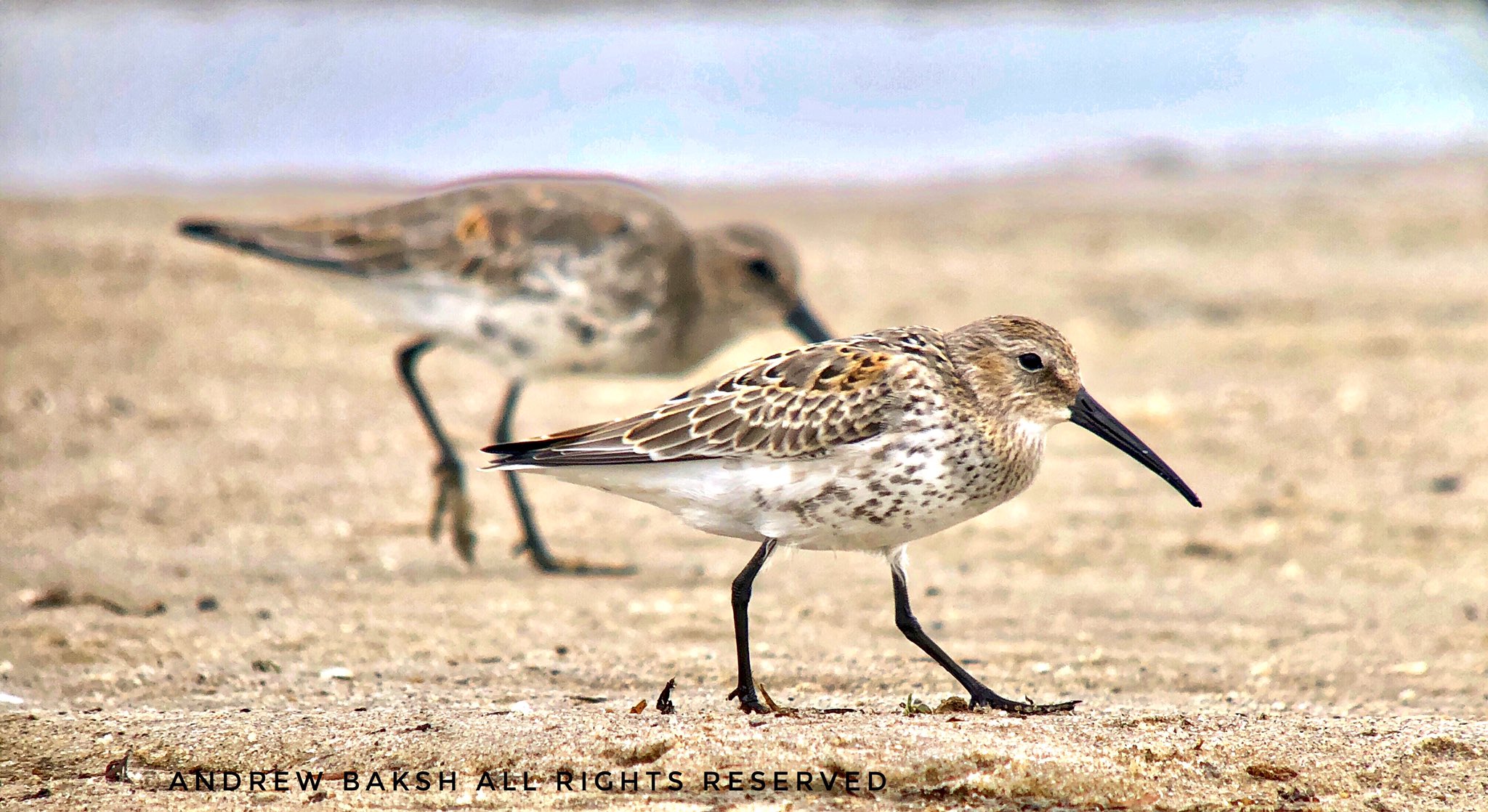In 1974, Manomet organized the volunteer-based International Shorebird Survey (ISS) to gather information on shorebirds and the wetlands they depend on. This monitoring network provides hemispheric data on shorebirds through the work of dedicated volunteers conducting field surveys during spring and fall migrations. Andrew Baksh is one of these volunteers who contribute so much data. Here Andrew shares about his love for shorebirds and what led him to become an ISS volunteer.
“I am known among my peers as the guy who spends way too much time looking at shorebirds. Birds were always in my blood, so to speak, thanks to my dad, the late Albert Bacchus. So, where did my love of shorebirds come from? I think it started a few years back when I went on a “Shorebird for Beginners” walk led by National Park Service (NPS) Ranger Julia Clebsch. The walk was at East Pond of Jamaica Bay Wildlife Refuge in Queens, New York City, and I was totally unprepared, not realizing that sneakers do not cut it on the East Pond. So, there I was on my first shorebird walk stranded on the dried-out shoreline while others walked in the muck with waders, fascinated at the sight of shorebirds and straining to hear Julia explain how to tell the difference between a Least and a Semipalmated sandpiper. Not a great start, but the seed was planted that day.

The next day, I purchased a pair of waders, returned to the East Pond, and spent the day looking at shorebirds, trying to learn how to ID them using my Sibley’s. The more I found that the identification of shorebirds is difficult, the more I was determined to learn. From that day forward, I began spending an exorbitant amount of time in the field looking at shorebirds, learning to identify them, and learning their behaviors. I had no one mentoring or teaching me shorebirds, but my drive to learn kept me going, and slowly but surely, I began to get better.
My efforts did not go unnoticed. Ranger Clebsch asked me to assist her in leading shorebird walks. A few years later, Tony Luscombe, an NPS Biologist who ran the Piping Plover program at Breezy Point Queens NYC, approached me about becoming an ISS volunteer for Manomet. In 2011, I was invited to participate as a leader in the NYC, Jamaica Bay Wildlife Refuge Annual Shorebird Festival, working with shorebird experts such as Kevin Karlson, co-author of the Shorebird Guide. I spent the evening before the festival being a test case for Kevin as he walked through his presentation. After he finished, Kevin asked me how long I had been observing shorebirds. When I responded, “2 years,” the look on his face was priceless. The next day Kevin made a point to mention my progress during his presentation. I was embarrassed to be called out, but delighted that someone at his level thought I was doing well in my shorebird studies. His feedback motivated me further.

I have now been an ISS shorebird volunteer for ten years. Being an ISS volunteer includes many challenges besides being able to accurately count and identify large numbers of shorebirds. For example, some of the survey sites require long drives and accessing areas that often require a county resident pass to avoid non-resident fees. A more personal challenge comes from being a person of color out in the field carrying around a spotting scope, camera, and binoculars. For many people, this may be a non-issue, but for me and perhaps others like me, we have the added burden of needing to prove that we are doing scientific work, depending on where we are conducting the surveys. This was especially so after 9/11.
I remember a few years ago leaving the north end of the East Pond at Jamaica Bay and being confronted by members of the NYPD (New York Police Department). Even after explaining that I was on the pond to count birds, I had to wait with officers while they consulted with members of Homeland Security to verify that my NPS research permit was legitimate. It was nerve-racking. I have since advocated for some form of identification from organizations that I volunteer with, like NPS, Audubon New York, and Manomet. I was grateful that Lisa Schibley from Manomet responded to my suggestion and put forth my idea to her colleagues. Lisa’s was the only response that was serious in considering my ID proposal, which speaks volumes about the ISS program.
In the meantime, my work with shorebirds continues, including contributing to ISS. Documenting shorebird data is critical to the understanding of shorebirds in North America as we continue to monitor population trends and collaborate with the worldwide scientific community to identify problems and provide solutions. I am grateful to be able to contribute to the great work done by many organizations around the globe in protecting shorebirds and that includes Manomet’s ISS.
The International Shorebird Survey team is extremely grateful for Andrew’s skill and dedication. Connect with him on Twitter!
ISS is always looking for shorebird enthusiasts to contribute surveys. Please contact lschibley@manomet.org for more information on how to contribute.





 Back to all
Back to all